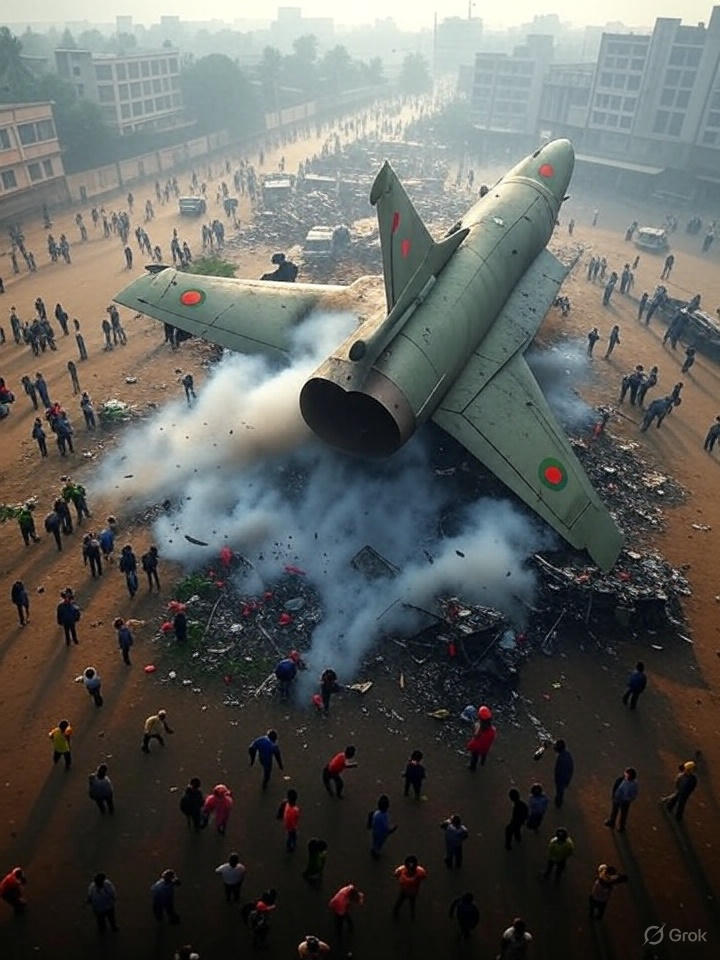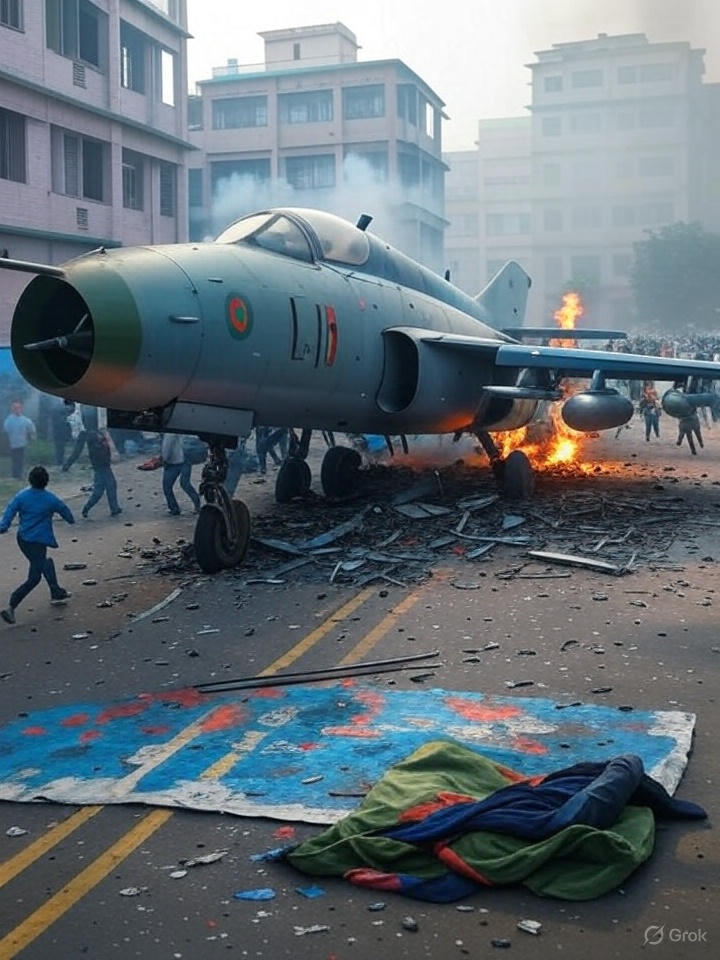Crash Overview & Casualties
On July 21, 2025, during a routine training sortie, a Bangladesh Air Force missile-capable F‑7 BGI fighter jet experienced a mechanical failure shortly after takeoff from Kurmitola’s Bir Uttom A. K. Khandker Air Base at around 1:06 p.m. local time (Reuters). The pilot made a heroic attempt to steer away from densely populated areas but crashed into the Milestone School and College campus in Dhaka’s Uttara neighborhood (Reuters).
The crash claimed the lives of at least 20 individuals, including the pilot, Flight Lieutenant Toukir Islam Sagar, and at least 19 ground victims—mostly children. Hospital records indicate over 170 people injured, with dozens in critical condition, many suffering from severe burns (Wikipedia).
Aircraft & Pilot’s Response
The aircraft involved was the Chinese-built Chengdu F‑7 BGI, Bangladesh’s most advanced variant, licensed from the Soviet-era MiG-21 and acquired in 2013 (Reuters). Eyewitnesses observed the jet making an abrupt, low-altitude descent into a two-story building on school grounds, igniting fires and panicking fleeing students (Reuters).
Military statements praised the pilot’s efforts: he “tried to steer the aircraft away from densely populated areas” before the crash (Reuters). Reports indicate that the pilot ejected but succumbed to his injuries later at the Combined Military Hospital in Dhaka (Wikipedia).
Rescue & Medical Response
First responders—including firefighters, army personnel, and ambulance crews—reached the site within minutes (Wikipedia, South China Morning Post). Over 60 children were taken to the National Institute of Burn and Plastic Surgery; many more were treated at Dhaka Medical College & Hospital (Wikipedia). Videos and testimonies depict a harrowing scene of smoke, flames, panicked children, and frantic rescue efforts (AP News).
Government & Public Reaction
Bangladesh declared July 22 a national day of mourning, with flags flown at half-staff (South China Morning Post). Interim leader Muhammad Yunus and other dignitaries expressed sorrow and pledged a full investigation via a high-level military committee (The Sun). Prime Minister Narendra Modi of India also conveyed condolences and offered assistance (AP News).

Historical Context & Safety Concerns
This tragic incident is among the deadliest aviation disasters in Dhaka’s history, comparable to the 2008 F‑7 crash that killed a pilot and local residents (The Washington Post). The crash also heightened regional fears about aircraft maintenance and aging military fleets—recalling the recent catastrophic Air India crash in Ahmedabad, India, which caused over 240 fatalities (Reuters, The Guardian).
Investigation & Pending Questions
The Bangladesh Air Force and ISPR have indicated a mechanical fault as the likely cause and are conducting a formal inquiry (Reuters). The investigation will examine aircraft maintenance records, pilot training protocols, the reliability of ejection systems, and emergency preparedness within military operations near civilian zones.
Impact & Policy Implications
This catastrophe lays bare a systemic hazard: military flight paths over civilian areas, particularly densely populated school zones. Experts are likely to call for:
- Revised flight protocols ensuring training flights avoid populated zones,
- Enhanced safety checks and upgrades for aging F‑7 fleets,
- Stricter maintenance and pilot safety standards,
- Improved emergency response plans within schools near military installations.
Looking Ahead
As Bangladesh grapples with national grief and grief-stricken families, the focus will turn to ensuring accountability, compensating victims, and bolstering flight safety. The military’s forthcoming report will be pivotal in preventing similar future tragedies.
Conclusion
The Dhaka crash is a tragic human calamity: a training flight gone wrong, high child casualties, and a grieving pilot’s final act to save lives. Beyond immediate sorrow lies a crucial opportunity—and obligation—for Bangladesh to strengthen aviation safety, revisit military‑civilian flight oversight, and improve emergency protocols near schools. Lessons learned here could profoundly influence military aviation policy across South Asia.

